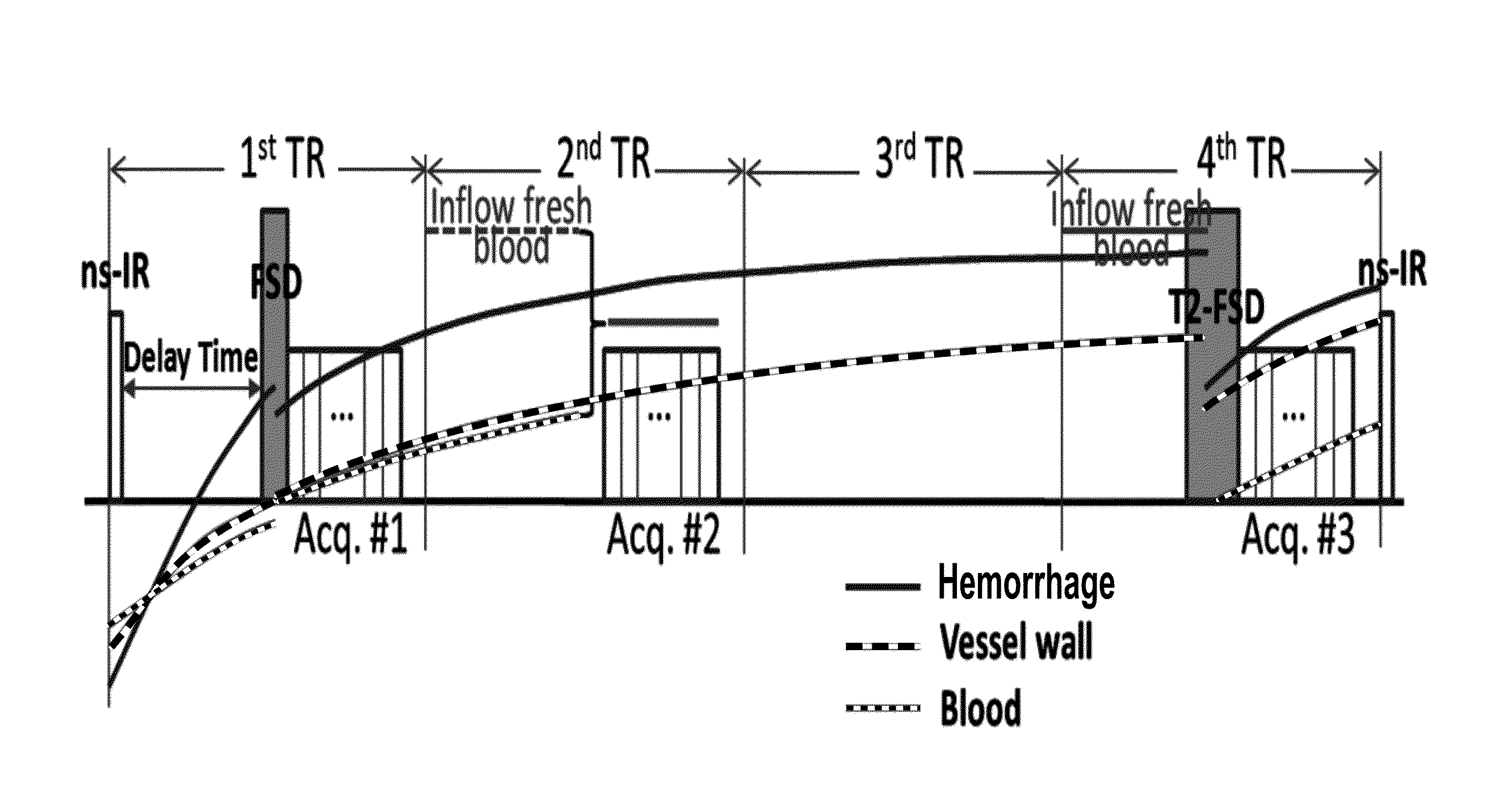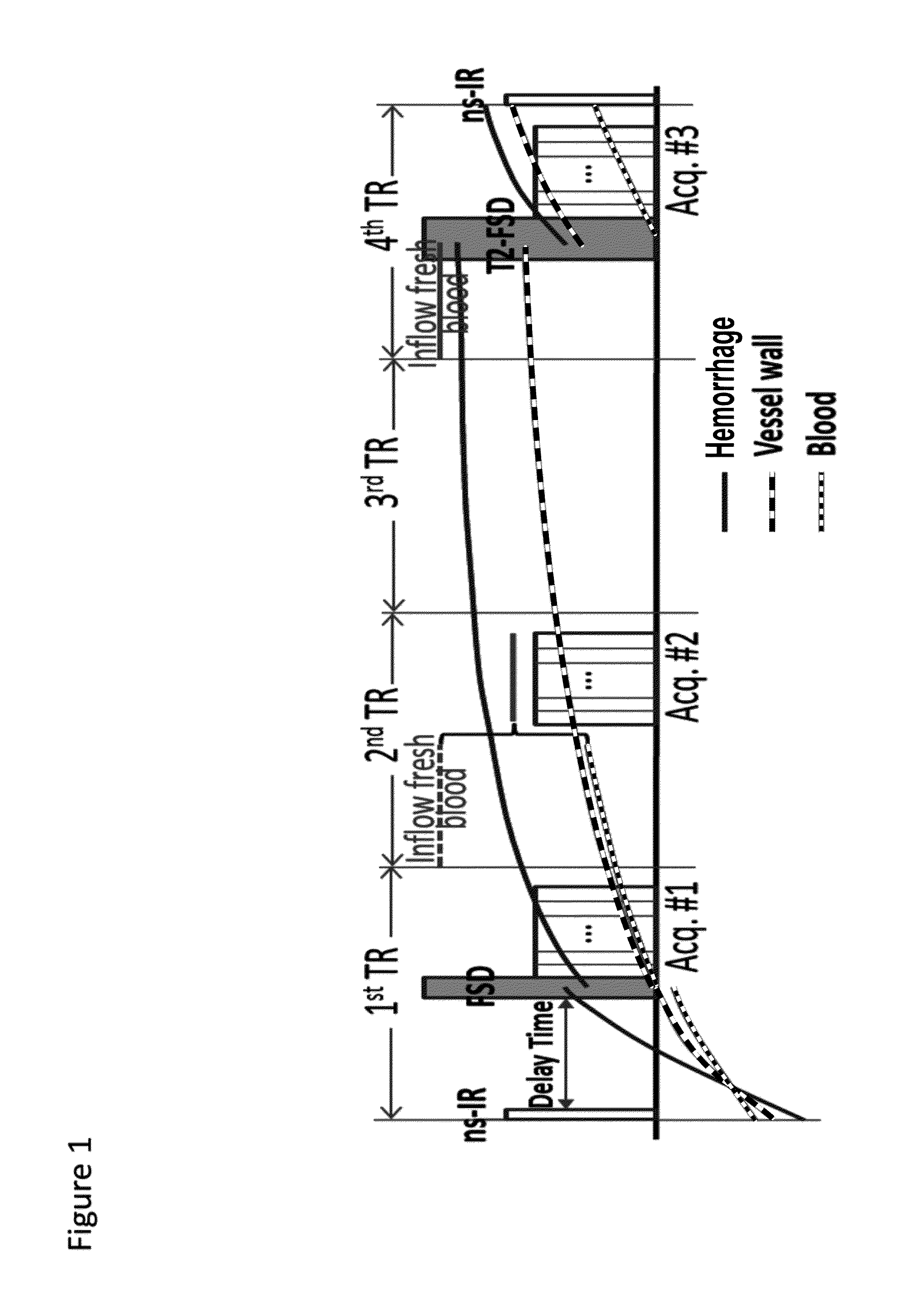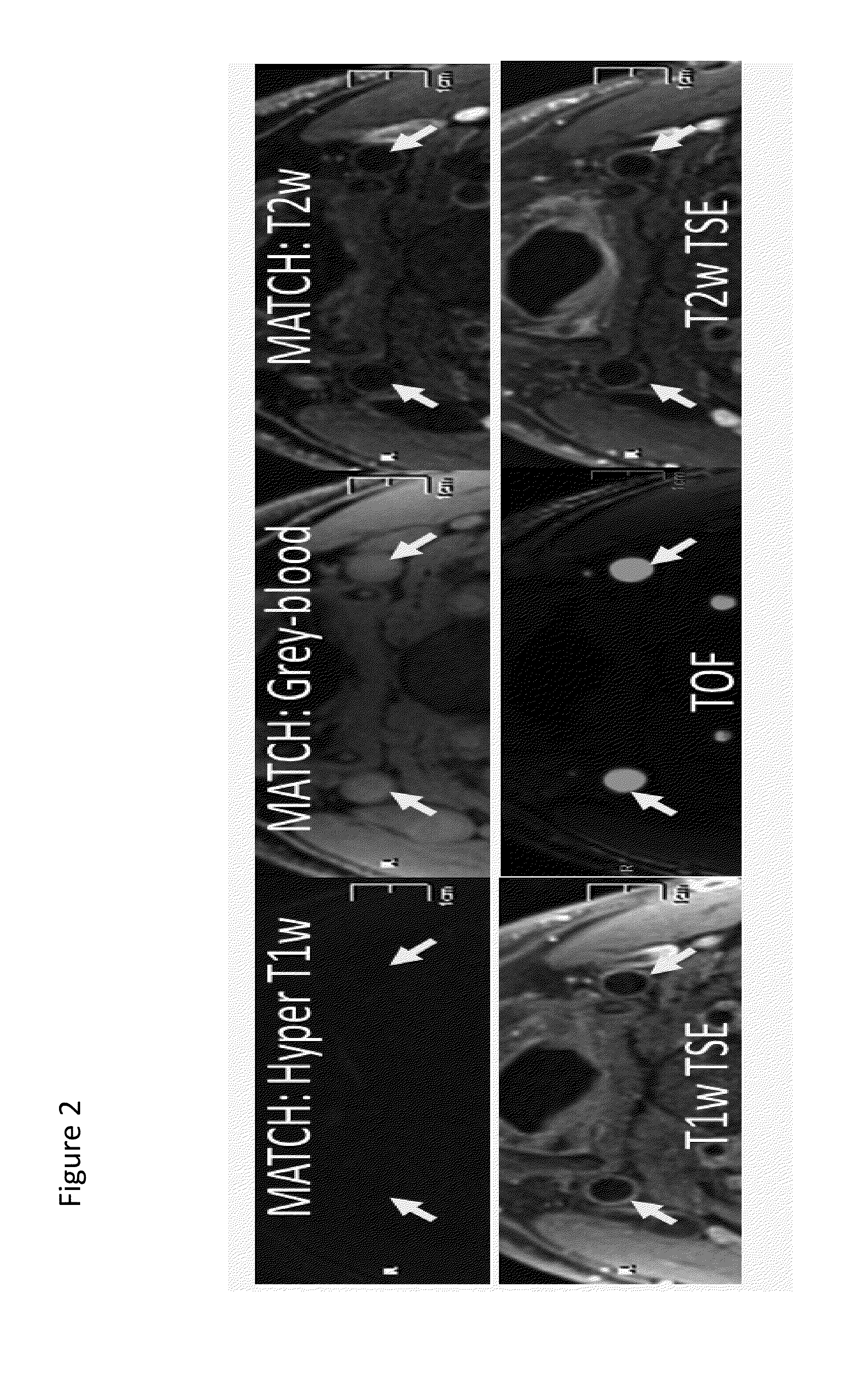Atherosclerosis characterization using a multi-contrast MRI sequence
a multi-contrast, mri-sequence technology, applied in the field of imaging methods, can solve problems such as compromising evaluation accuracy and misregistration between image sets
- Summary
- Abstract
- Description
- Claims
- Application Information
AI Technical Summary
Benefits of technology
Problems solved by technology
Method used
Image
Examples
example 1
Methods
[0034]The inventive “MATCH” (Multicontrast Atherosclerosis Characterization) sequence uses a low-flip-angle gradient echo-based MRI acquisition technique combined with specialized magnetization preparative schemes, and multiple co-registered 3D image sets with different contrast weightings are collected in an interleaved fashion.
[0035]As shown in FIG. 1, the interleaved acquisition of the inventive method consists of 4 repetition times (TRs). The first TR provides hyper T1-weighted (T1-w) contrast at the vessel wall by using a nonselective inversion pulse and a blood-suppressing FSD preparation. The second TR provides grey-to-bright blood lumen that is secondary to both blood T1-recovery and in-flow fresh blood. The third TR is for the vessel wall spins to continue to recover. Finally, the fourth TR provides T2-weighted (T2-w) contrast at the vessel wall by using a long-duration FSD preparation. The three contrasts are aimed to identify the intra-plaque hemorrhage, juxtalumin...
example 2
Results & Discussion
[0037]With the optimized imaging parameters based on computer simulations, the “MATCH” technique described above was capable of providing nulled normal vessel wall on the first contrast weighting, iso-intense or brighter blood on the second contrast weighting, and dark-blood wall on the third contrast weighting, as observed in the healthy volunteer scans (FIG. 2). When applied to clinical cases, MATCH yielded focal signal voids for juxtaluminal calcification (FIG. 3) and hyper-intense depiction for hemorrhage (FIG. 4), both of which were confirmed by conventional protocol. The three 3D image sets that were obtained were spatially co-registered, markedly facilitating plaque assessment.
[0038]As demonstrated above, MATCH is a very useful technique for accurate plaque characterization. One of skill in the art would readily appreciate that mechanical improvements such as isotropic resolution and fast imaging would further improve the clinical value of the inventive te...
PUM
 Login to View More
Login to View More Abstract
Description
Claims
Application Information
 Login to View More
Login to View More - R&D
- Intellectual Property
- Life Sciences
- Materials
- Tech Scout
- Unparalleled Data Quality
- Higher Quality Content
- 60% Fewer Hallucinations
Browse by: Latest US Patents, China's latest patents, Technical Efficacy Thesaurus, Application Domain, Technology Topic, Popular Technical Reports.
© 2025 PatSnap. All rights reserved.Legal|Privacy policy|Modern Slavery Act Transparency Statement|Sitemap|About US| Contact US: help@patsnap.com



